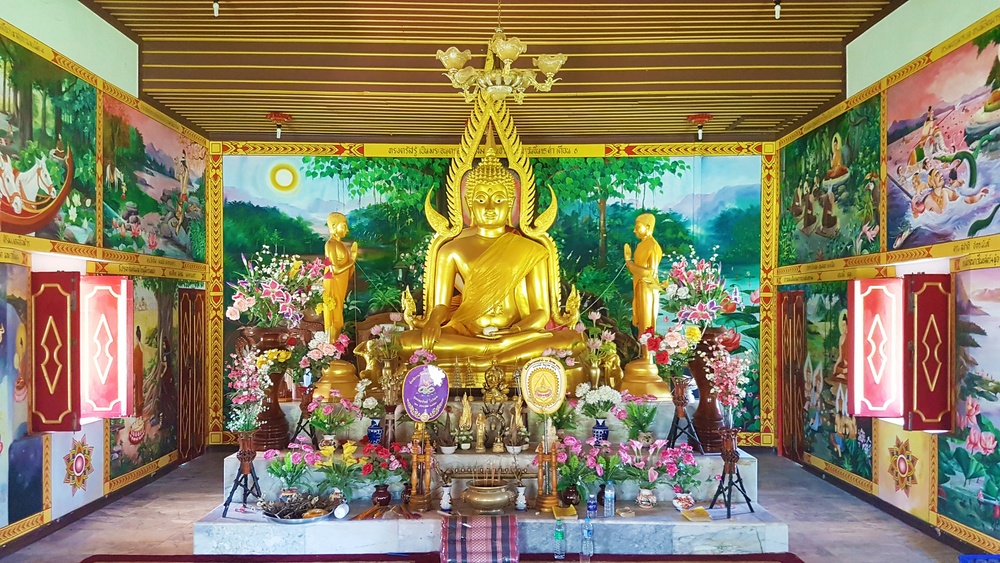Explore the Serenity: A Complete Guide to Buddhist Monasteries in India
India, the birthplace of Buddhism, is home to some of the most tranquil and spiritually enriching monasteries in the world. These sacred sites are not only places of worship but also centers of learning, reflection, and peace. Whether tucked away in the snow-covered Himalayas or nestled in tropical landscapes, Buddhist monasteries in India offer an unparalleled escape into mindfulness and serenity.
In this complete guide, we explore the origins, significance, and most notable monasteries across India, helping you plan a spiritual journey steeped in history, culture, and inner peace.
Why Visit Buddhist Monasteries in India?
Buddhist monasteries in India are more than architectural marvels or tourist spots—they are gateways to spiritual awakening and cultural understanding. Rooted in centuries-old traditions, they provide:
- Peaceful surroundings for meditation and introspection
- Opportunities to learn Buddhist philosophy and teachings
- Rich cultural experiences through festivals and rituals
- Insight into unique architecture and art styles of different Buddhist sects
Whether you’re a spiritual seeker, a history enthusiast, or a curious traveler, visiting these monasteries can be deeply rewarding.
Historical Roots of Buddhism in India
Buddhism began in India in the 6th century BCE with the enlightenment of Prince Siddhartha Gautama, who became the Buddha. Over centuries, Buddhist thought spread across Asia, but India retained its sacred status due to sites like Bodh Gaya, Sarnath, and Nalanda. Today, Buddhist monasteries in India represent a living legacy of this profound philosophy.
Most Famous Buddhist Monasteries in India
Here are some of the most serene and culturally significant monasteries you can visit:
1. Tawang Monastery, Arunachal Pradesh
The largest monastery in India, Tawang is perched at 10,000 feet in the Eastern Himalayas. Belonging to the Gelugpa sect, it houses ancient scriptures, vibrant murals, and a giant statue of Lord Buddha. The location offers unmatched tranquility and spiritual energy.
2. Rumtek Monastery, Sikkim
As the seat of the Karmapa, head of the Karma Kagyu lineage, Rumtek Monastery is a vital center of Tibetan Buddhism in India. Surrounded by lush hills, it features golden stupas, intricate woodwork, and chanting halls that create an atmosphere of deep calm.
3. Hemis Monastery, Ladakh
Located near Leh, Hemis is one of the richest and most visited Buddhist monasteries in India. Known for its annual Hemis Festival celebrating Guru Padmasambhava, the monastery houses a vast collection of thangkas, statues, and relics, all within a stunning mountain landscape.
4. Namdroling Monastery, Karnataka
Also known as the Golden Temple, Namdroling is the largest teaching center of the Nyingma lineage outside Tibet. Located in Bylakuppe, the monastery welcomes thousands of monks and visitors alike. Its golden statues, Tibetan architecture, and quiet atmosphere make it ideal for spiritual retreats.
5. Ghoom Monastery, West Bengal
This charming monastery near Darjeeling is one of the oldest Tibetan Buddhist monasteries in India. It houses a magnificent 15-foot statue of the Maitreya Buddha and ancient Buddhist texts. The cool mountain air and simple surroundings offer a quiet escape from the busy world.
6. Mindrolling Monastery, Dehradun
Founded in 1965, this monastery is one of the most important centers of the Nyingma tradition. The main attraction is the Great Stupa, which is 60 meters tall and beautifully decorated with murals and spiritual artifacts. It’s a perfect stop for anyone seeking both knowledge and peace.
7. Tashi Lhunpo Monastery, Karnataka
A replica of the original Tibetan monastery, this Bylakuppe-based institution is the seat of the Panchen Lama in exile. The complex is known for its tranquil environment, impressive prayer halls, and large statues of the Buddha.
8. Mahabodhi Temple Complex, Bodh Gaya, Bihar
While technically not a monastery, the Mahabodhi Temple is one of the holiest Buddhist sites in the world. Surrounding it are several monasteries built by different Buddhist nations like Thailand, Japan, and Bhutan, reflecting global Buddhist unity and devotion.
What to Expect During a Visit
When visiting Buddhist monasteries in India, you can expect:
- Daily prayers and chants: Monks often perform morning and evening rituals, which are open to visitors.
- Teachings and discourses: Many monasteries offer lectures on Buddhist philosophy and meditation.
- Peaceful environments: Most monasteries are located in scenic and serene locations, perfect for relaxation and reflection.
- Cultural festivals: Timed visits during festivals like Buddha Purnima or Hemis Festival provide vibrant, immersive experiences.
Travel Tips for Monastery Visits
- Dress modestly: Wear clothes that cover your shoulders and knees.
- Respect silence: Many areas require minimal noise.
- Ask before photographing: Always seek permission, especially during rituals.
- Participate in meditation: Many monasteries offer meditation sessions for visitors.
Conclusion
Buddhist monasteries in India are more than sacred spaces—they are living embodiments of peace, compassion, and timeless wisdom. Exploring them provides not just a glimpse into Buddhist traditions, but also a unique chance to reconnect with yourself in the quiet of ancient hills, golden prayer halls, and the soft murmurs of chants.
Whether you seek spiritual solace or a break from the fast-paced world, a visit to these monasteries will leave you refreshed, inspired, and more mindful of the present moment. So, embark on a journey to explore the serenity that these sacred spaces offer—your soul will thank you.

